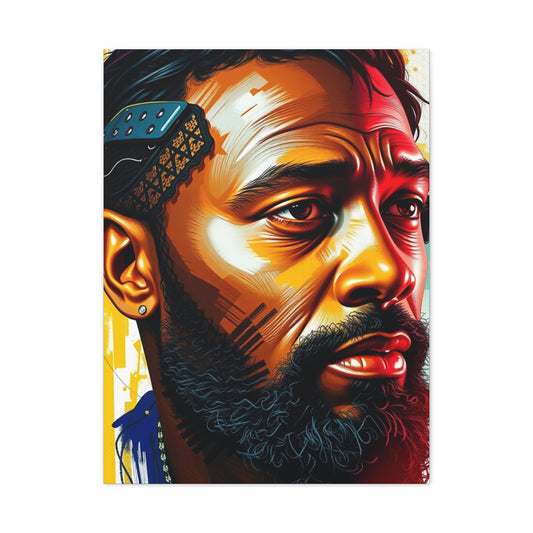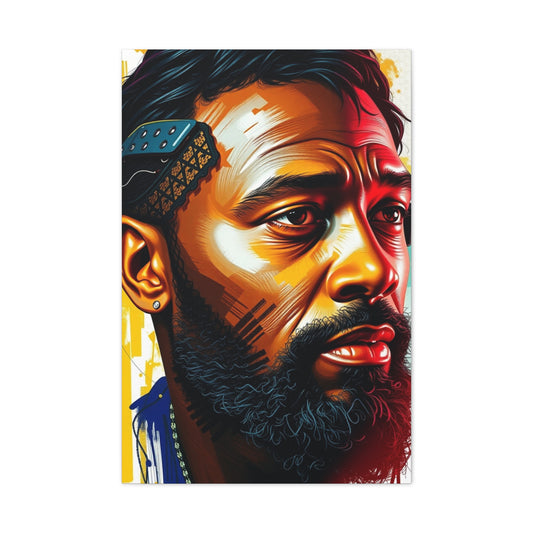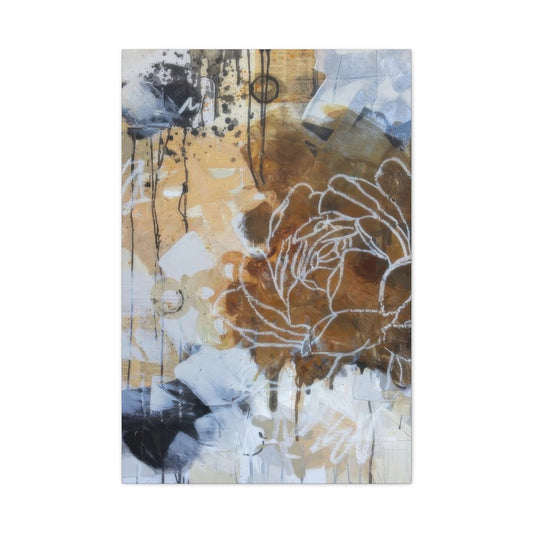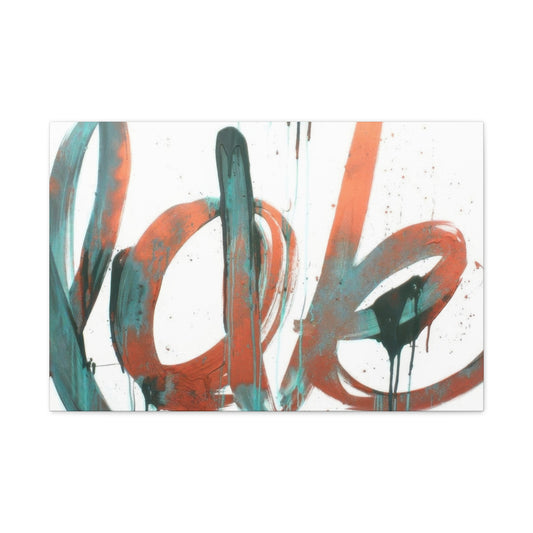Navigating the digital camera market in 2025 demands a discerning eye. With the proliferation of models across various formats and sensor sizes, determining the right match isn’t just about megapixels—it’s about creative synergy. Whether you're capturing life’s candor in city streets, producing professional-grade cinema, or developing your skill set as a novice, there’s a camera engineered for your exact needs.
This year’s landscape is brimming with innovation. From lightweight mirrorless systems to full-frame hybrids, each device on this curated list has been handpicked for its ability to elevate both still and motion work. We spotlight compact systems ideal for travel, robust full-frame performers for studio work, and hybrid marvels that master the art of dual media.
Finding the Right Fit: What Truly Makes a Camera the Best?
Defining the "best" camera is a nuanced endeavor. What suits a cinematic storyteller may not resonate with a wildlife photographer. Some may crave optical fidelity, while others prioritize intuitive handling or mobility. This is why our selection includes a spectrum of models tailored to distinct creative demands—from street shooters needing compact discretion to studio professionals demanding immense panchromatic clarity and control.
Newcomers will appreciate models that gently introduce them to exposure, reciprocity, and composition. Seasoned image-makers may seek microcontrast mastery, customizable colorimetry, and tactile control. Videographers, meanwhile, benefit from cameras with clean HDMI output, low-latency encoding, and sophisticated color profiles like C-Log or F-Log.
Whether you're chasing chromaticity in low-light portraits or seeking impeccable sensor fidelity for landscape panoramas, the following guide provides a gateway to your ideal photographic tool.
Canon EOS R100 – A Compact Entry into the Mirrorless Realm
In the evolving realm of digital photography, finding a camera that offers simplicity without sacrificing quality is a rare feat. The Canon EOS R100 positions itself as a luminous beacon for aspiring photographers seeking to bridge the gap between casual snapshots and deliberate, expressive imagery. As one of the most approachable mirrorless systems available in 2025, the R100 delivers a seamless blend of functionality, image clarity, and video versatility—making it a top choice for emerging creatives.
Designed with an intuitive layout and ergonomically contoured to fit comfortably in hand, this camera is a featherweight in both literal and metaphorical terms. It weighs just 356 grams, including battery and memory card, making it an ideal companion for spontaneous urban adventures, family vacations, or long days of on-the-go content creation. Despite its compact footprint, the EOS R100 radiates with potential, supporting photographers as they transition from automated point-and-shoot devices to the more nuanced realm of manual creativity.
Image Quality and Sensor Performance
At the core of the Canon EOS R100 lies a refined 24.1-megapixel APS-C CMOS sensor. This sensor size offers a harmonious balance between image resolution and light sensitivity, producing imagery rich in detail and tonal depth. Whether capturing radiant sunrises, softly lit portraits, or vibrant street scenes, the sensor's performance is consistently evocative.
The color reproduction is nuanced and faithful, thanks to Canon’s well-regarded image processing pipeline. The natural chromaticity preserved in JPEGs, paired with the malleability of RAW files, enables users to explore both in-camera precision and post-processing flexibility. With an ISO range stretching up to 12,800 (expandable further), the EOS R100 also performs admirably in low-light conditions. Even in dim indoor settings or moody twilight hours, it maintains a commendable luminance-to-noise ratio.
Autofocus System: Swift and Responsive
Canon’s revered Dual Pixel CMOS Autofocus elevates the R100 far beyond entry-level expectations. Comprising 3,975 selectable focus positions, the system ensures subject acquisition with impressive accuracy and fluidity. Whether photographing kinetic scenes like pets in motion or spontaneous portraits of friends, the face and eye-detection algorithms keep subjects crisply defined, even when moving erratically.
This responsive autofocus makes it easier for beginners to focus on composition and creative framing, rather than fumbling with manual controls. Its tracking capabilities are especially useful for those experimenting with candid photography or documenting life’s unrehearsed moments.
Video Capabilities: A Gateway to Cinematic Expression
The Canon EOS R100 is not merely a stills machine—it’s a worthy contender in the growing world of video content creation. Capable of recording in 4K UHD at 24 frames per second, it delivers sharp, high-fidelity footage with excellent dynamic range and color precision. This resolution is ideal for YouTube vlogs, cinematic storytelling, and travel documentation, especially for those seeking a cleaner, more professional aesthetic than what smartphones can typically offer.
|
Related Catagories: |
Additionally, the camera supports Full HD video at 60 fps, allowing creators to craft smooth slow-motion sequences for dynamic storytelling. While the absence of in-body image stabilization may pose a challenge for handheld shooting in certain scenarios, it encourages new users to explore alternative techniques such as using tripods, gimbals, or even employing the optical stabilization features found in compatible Canon RF lenses.
Ergonomics and Usability
The R100’s layout is uncluttered and intelligently designed to welcome those new to interchangeable lens systems. The menu is structured for accessibility, making it easy to understand settings such as aperture, shutter speed, and ISO. Canon’s guided UI also provides contextual on-screen help, which is especially beneficial for learning photographers. This reinforces not just operational competence but also an understanding of the essential principles of exposure and reciprocity.
The electronic viewfinder, with its 2.36-million-dot resolution, offers a clear, immersive preview of the scene. It proves particularly useful in bright environments where the rear LCD may be less visible. And while the LCD itself is fixed and not touch-enabled—a concession to cost—its clarity remains reliable for most shooting conditions.
Connectivity and Sharing Features
Equipped with built-in Wi-Fi and Bluetooth, the Canon EOS R100 encourages immediate content sharing and remote camera control. Paired with Canon’s mobile app, users can wirelessly transfer photos to their smartphones, control the shutter remotely, or update firmware without tethering to a computer. This modern functionality is indispensable for creators who favor agility in their workflow, such as travel bloggers or digital nomads.
Limitations as a Learning Opportunity
It is worth noting that the EOS R100’s limitations—namely, the lack of in-body stabilization, a tilting LCD, or a microphone jack—may present some initial constraints. However, these features, often reserved for mid-tier models, need not discourage the curious beginner. Instead, their absence offers a chance to hone one’s understanding of framing, composition, and audio workaround techniques. For instance, one may learn to pay closer attention to lighting angles or camera movement, ultimately fostering a more conscientious photographic process.
Lens Compatibility and System Growth
The Canon EOS R100 is part of the Canon RF mount ecosystem, which offers a rich selection of lenses—from compact pancake primes to professional-grade telephoto zooms. This compatibility ensures that the camera remains relevant as its user grows more confident and begins to explore niche subjects such as macro photography, astrophotography, or videography with shallow depth of field. Investing in the R100 is, in essence, an investment in an expandable platform that can evolve with your aspirations.
Fujifilm X-T5 – A Masterclass in APS-C Versatility
In a saturated field of digital cameras, the Fujifilm X-T5 stands apart as a harmonious fusion of engineering precision and tactile elegance. Designed to invoke nostalgia while delivering cutting-edge performance, this APS-C mirrorless masterpiece continues Fujifilm’s legacy of crafting tools that resonate deeply with serious photographers and filmmakers alike. Compact yet powerful, intuitive yet sophisticated, the X-T5 proves that size and sensor format are no limitation when creative expression is at stake.
Celebrated for its commitment to retro aesthetics, the X-T5 draws immediate attention with its physical dials, mechanical shutter feel, and robust magnesium-alloy chassis. Yet beneath its vintage shell, the camera harbors a suite of advanced technologies that make it a formidable rival to many full-frame and even medium-format systems.
Sensor and Image Quality: The Pinnacle of APS-C Precision
At the heart of the X-T5 lies a 40.2-megapixel X-Trans CMOS 5 HR sensor. This high-resolution APS-C sensor transcends typical expectations for its class, delivering imagery imbued with exceptional clarity, texture, and fidelity. The unique pixel arrangement of the X-Trans array reduces moiré and promotes lifelike tonality without the need for an optical low-pass filter, preserving exquisite microcontrast in fine details.
What elevates this camera beyond its peers is the inclusion of Pixel Shift Multi-Shot technology. By capturing and compositing multiple exposures with tiny sub-pixel movements, the X-T5 generates stunning 160 MP ultra-resolution images. This places it squarely in the realm of medium-format performance, ideal for archival prints, macro work, and commercial photography requiring meticulous sharpness and chromatic neutrality.
In terms of color rendition, Fujifilm’s hallmark remains unchallenged. The camera boasts an expansive palette of film simulations, including Astia, Velvia, and the ever-popular Classic Chrome. These modes are more than stylistic presets—they offer emulations rooted in the physical emulsions of iconic Fujifilm films, delivering refined results that photographers once labored over in darkrooms.
Video Capabilities: A Versatile Tool for Cinematic Storytelling
Filmmakers are equally rewarded with the X-T5’s video prowess. It offers 6.2K recording at 30 frames per second, captured in 10-bit 4:2:2 internally for maximum grading flexibility. The camera supports F-Log2, providing a generous dynamic range that enhances post-production latitude and elevates the cinematic qualities of your footage.
Whether capturing nuanced interviews or fast-paced action, the hybrid autofocus system performs admirably, driven by phase-detection points that span nearly the entire frame. The intelligent subject-tracking algorithm is trained to identify human faces, eyes, and even animals with astonishing acuity, ensuring that focus remains precise and unflinching during dynamic scenes.
In-body image stabilization further extends the X-T5’s creative flexibility. The five-axis stabilization system compensates for camera shake across various axes, delivering sharper handheld results in low light or while shooting video without additional rigging. This is especially beneficial for travel filmmakers or documentary shooters who require mobility and spontaneity.
Design and User Interface: Intuitive Controls Meet Timeless Form
The X-T5 is more than a digital instrument—it is a tactile experience. Its dials for ISO, shutter speed, and exposure compensation are machined with impeccable attention to detail, giving users direct control over core photographic elements without relying on electronic menus. This analog-style interface encourages a deeper engagement with photographic technique, fostering intentionality in every frame.
Despite its compact size, the body is both weather-sealed and well-balanced, providing durability for fieldwork in unpredictable climates. The 3.0-inch, three-way tilting LCD accommodates both low-angle compositions and discreet street shooting, while the 3.69-million-dot electronic viewfinder offers an immersive preview with minimal latency and superior clarity.
Battery life, often a concern for mirrorless users, has also been improved. With up to 740 frames per charge in economy mode, the X-T5 is well-suited for extended outings or long portrait sessions without frequent power concerns.
Wireless Connectivity and Workflow Enhancements
For contemporary content creators, seamless workflow is paramount. The Fujifilm X-T5 addresses this with built-in Wi-Fi and Bluetooth, enabling wireless file transfer, remote shooting, and automatic geotagging through Fujifilm’s dedicated app. Whether you’re uploading directly to a cloud-based library or sharing select shots to social media, the transfer process is intuitive and reliable.
The dual SD UHS-II card slots also streamline professional workflows, allowing for simultaneous backup, RAW-JPEG separation, or video and photo segmentation. This redundancy is crucial for high-stakes shooting environments where data integrity is non-negotiable.
Limitations and Considerations
Though the X-T5 edges close to perfection, it's not without subtle caveats. It lacks a full-size HDMI port, which might deter some video-centric users who frequently use external recorders. Additionally, the absence of a built-in flash and the reliance on external lighting accessories may require additional investment for studio work.
However, these limitations are far from deal-breakers. They underscore Fujifilm’s focused design philosophy: to offer a precision tool for discerning image-makers who value manual control, image fidelity, and aesthetic excellence over one-size-fits-all compromises.
Olympus OM System OM-5 – Adventure-Ready and Elegant
For image-makers who value mobility, environmental resilience, and creative versatility, the Olympus OM System OM-5 emerges as a masterstroke of Micro Four Thirds innovation. Straddling the intersection between technical excellence and on-the-go practicality, this camera exemplifies what a modern mirrorless device can be—compact, robust, and extraordinarily capable across both photography and videography landscapes.
Released as a continuation of Olympus’s legacy under the OM System banner, the OM-5 carries forward a lineage rooted in exploration. Whether you’re capturing jagged ridgelines in frigid alpine light or detailing the verdant intricacies of rainforest flora, this compact camera is designed to thrive under diverse environmental duress. At just 414 grams (including battery and memory card), it’s a featherweight powerhouse built for those with an insatiable urge to roam and record.
Sensor Capabilities and High-Resolution Performance
At its heart lies a 20.4-megapixel Live MOS Micro Four Thirds sensor—refined for balance, precision, and rapid processing. Though the sensor size is physically smaller than APS-C or full-frame counterparts, it punches far above its weight class due to OM System’s nuanced computational imaging technologies.
A signature feature is its Hi-Res Shot mode, which leverages sensor-shift mechanics to synthesize multiple exposures into a single 50 MP image. Uniquely, this high-resolution feature can be used handheld, negating the need for a tripod—a rare advantage in field situations where portability is key. This makes the OM-5 a uniquely capable tool for landscape artists, architectural shooters, and macro specialists seeking the sharpness and granularity typically reserved for medium-format systems.
In-Body Image Stabilization: Field-Tested and Proven
The OM-5’s five-axis in-body image stabilization system is among the finest in the industry. With up to 6.5 stops of compensation—or up to 7.5 stops when paired with select stabilized lenses—it permits low-light shooting, long exposures, and telephoto work without the typical constraints of camera shake.
This level of stabilization also benefits handheld video recording. Whether filming from the back of a moving vehicle or on a brisk mountain trail, the OM-5’s stabilization tech smooths out motion-induced jitter, allowing creators to capture fluid footage without reliance on external gimbals or rigs.
Built for the Elements: Weather Sealing and Durability
Where the OM-5 excels beyond many rivals is in its all-weather resilience. Engineered with an IP53 rating, its dustproof, splashproof, and freezeproof body makes it ideal for photographers operating in unpredictable climates. Whether you’re caught in a highland downpour or photographing sand-swept ruins, this camera maintains operational integrity and continues shooting with poise.
Its magnesium-alloy chassis contributes not only to durability but also to the camera’s refined tactile balance. The grip feels secure, the controls intuitive, and the buttons remain responsive even when used with gloves—an often-overlooked yet essential consideration for adventurers.
Creative Features and Computational Tools
The OM-5 is equipped with a suite of computational photography functions that elevate creative potential. Live ND, for instance, digitally simulates neutral density filters, allowing you to achieve long-exposure effects—such as silky waterfalls or fog-like ocean textures—without needing physical filters. Available in multiple strength levels, this feature opens new doors for minimalist and abstract compositions, even in broad daylight.
Focus stacking is another standout, particularly useful in macro photography. By automatically blending multiple frames with varying focus depths, the camera produces images with expansive depth of field—perfect for capturing intricate subjects like insects, minerals, or fine mechanical parts. These functions, once laboriously achieved in post-production, are now rendered in-camera with finesse.
The inclusion of Starry Sky AF, a rare feature in any mirrorless camera, empowers astrophotographers to capture precise star fields with auto-assisted focusing. This reduces the reliance on trial-and-error manual focusing in dark environments and makes celestial documentation significantly more approachable.
Video Performance and Social-First Tools
Video creators will find the OM-5 to be equally capable in motion work. It records 4K UHD at 30 frames per second, delivering sharp and color-accurate footage with clean HDMI output support for external monitors or recorders. Thanks to its advanced stabilization and phase-detection autofocus, handheld vlogging or nature videography becomes an effortlessly smooth experience.
Vertical video recording is seamlessly integrated, catering to creators producing content for platforms optimized for upright orientation. This is especially useful for Instagram Reels, TikTok, and YouTube Shorts—offering an edge to photographers and influencers working in mobile-first ecosystems.
Additionally, the OM-5 functions as a high-resolution USB webcam, allowing professional livestreaming or remote conferencing without additional gear. The transition from capturing wilderness scenes to presenting them live to a global audience has never been more fluid.
Portability Without Compromise
Despite its advanced feature set, the OM-5 maintains a svelte form factor. It slips easily into messenger bags or hiking satchels, and when paired with lightweight Micro Four Thirds lenses, the overall system weight becomes negligible. This minimalist gear philosophy enables creators to remain light on their feet—ready to react to fleeting light, sudden wildlife appearances, or travel constraints with total fluidity.
Its battery life, rated at approximately 310 shots per charge, is further supported by USB charging capabilities. This ensures continuous operation through portable power banks—an essential advantage for creators who often operate far from power sources.
Sony ZV-1 II – A Creator’s Pocket-Sized Dream
In a digital world where content reigns supreme and visual narratives evolve rapidly, the Sony ZV-1 II emerges as a beacon for creators craving sophistication without bulk. It’s more than a compact camera—it’s a meticulously engineered multimedia tool, designed for those who need to produce captivating content on the fly. From lifestyle vloggers and travel storytellers to remote educators and influencers, this camera offers professional-grade output in a body that fits in your palm.
Built with intention and clarity of purpose, the Sony ZV-1 II reflects the brand’s dedication to empowering mobile creativity. With enhanced ergonomics, refined optics, and intelligent audio capture, it addresses the nuanced needs of today’s hybrid content professionals who require portability, precision, and immediacy in their workflow.
Compact Design, Infinite Possibility
The first thing that strikes you about the Sony ZV-1 II is its portability. Measuring just under 105mm in width and weighing approximately 292 grams, this camera is engineered for one-handed operation and can comfortably ride in a jacket pocket or a compact travel kit. Its minimalist design belies a wealth of technical sophistication.
Whether you’re walking through a bustling night market, perched on a cliff for a sunrise vlog, or conducting a home-based tutorial, this pocketable system ensures that spontaneous ideas can be translated into polished visuals without encumbrance. The control layout is intuitive, with a tactile record button, custom shortcut access, and a dedicated background defocus switch—ideal for achieving creamy bokeh with a single tap.
|
Related Catagories: |
Lens and Sensor: Small Format, Big Impact
At the heart of the ZV-1 II lies a one-inch Exmor RS CMOS sensor paired with a 20.1-megapixel resolution. This sensor size, though smaller than APS-C or full-frame formats, provides a delightful balance between depth of field control, noise reduction, and color accuracy. The resulting imagery is richly detailed, exhibiting faithful luminance and tonal gradients that resonate well across diverse platforms.
The built-in 18–50mm equivalent lens, with a variable f/1.8–4 aperture, offers remarkable flexibility for a fixed lens system. This focal length range is ideal for vlogging, food photography, architectural scenes, and handheld interviews. The wide f/1.8 aperture excels in low-light conditions and facilitates dramatic subject isolation, even in tight indoor settings. Optical clarity is excellent, with minimal chromatic aberration and pleasing sharpness from edge to edge.
Advanced Autofocus and Subject Recognition
Autofocus is one of the defining features of the ZV-1 II. Drawing from Sony’s advanced real-time tracking technology, the camera implements eye-detection autofocus that reliably locks onto human subjects—crucial for solo content creators who need to stay in focus without assistance. This intelligent focus system responds fluidly to movement and lighting changes, making it well-suited for dynamic on-the-go shooting.
For creators who frequently shift focus between objects and themselves—like product reviewers or DIY educators—the Product Showcase setting ensures seamless transitions. With a natural rack focus effect, the camera shifts focus instantly when an object is brought close to the lens, then returns to the face once the product is removed. This feature alone saves considerable time in editing and enhances viewer engagement.
Video Features: Elevated Content Without the Fuss
The Sony ZV-1 II is built for creators who prioritize cinematic clarity and quick delivery. It records 4K video at 30 frames per second, capturing rich detail and accurate colors with minimal rolling shutter distortion. High Frame Rate (HFR) recording allows for slow-motion capture at up to 120 fps in Full HD, enabling dramatic replays and artistic storytelling.
The digital image stabilization, while not as refined as optical systems, performs admirably in stabilizing handheld footage. For everyday walking scenes, talking-head segments, or first-person action shots, the stabilization provides a noticeable reduction in jitter—particularly when coupled with proper grip techniques or small tripods.
The camera supports vertical video recording as well, automatically rotating the file metadata to fit platforms like TikTok, Instagram Reels, and YouTube Shorts. This minimizes editing friction and allows creators to focus on storytelling rather than file formatting.
Sound Quality That Matches the Picture
Sound is half the story in video, and the ZV-1 II doesn’t compromise here. The three-capsule directional microphone captures clear audio in varied environments, while an included windscreen ensures minimal interference when shooting outdoors. For more controlled environments, such as remote teaching or podcasting, the built-in mic provides rich, intelligible voice quality that minimizes ambient disruption.
For those needing enhanced audio control, the camera includes a 3.5mm microphone input for lavaliers or shotgun mics—making it adaptable to both run-and-gun creators and those working in controlled settings.
Seamless Connectivity and Streaming Readiness
In an age of immediacy, the Sony ZV-1 II excels in post-capture convenience. Wi-Fi and Bluetooth enable instant file transfer to mobile devices using Sony’s companion app, allowing for quick uploads or social sharing. With USB streaming capability, the camera also doubles as a plug-and-play high-resolution webcam for Zoom meetings, webinars, or live social broadcasts.
There’s no need for external encoders or software. Simply plug the camera into your computer via USB-C, and you can immediately stream or present with professional image quality. Whether you’re broadcasting from a studio desk or live on the road, the ZV-1 II adapts to your pace.
Practical Considerations and Limitations
While the Sony ZV-1 II is impressively versatile, it does have a few limitations. Its fixed lens system may not appeal to users looking for interchangeable lens flexibility, and the limited optical zoom range can feel restrictive for certain types of content, like wildlife or long-range sports. Additionally, although the battery life is reasonable, creators embarking on extended sessions are advised to carry an external power bank or spare batteries for uninterrupted production.
Still, these are minor trade-offs in a design that focuses heavily on immediacy and usability. The absence of complexity is intentional—streamlining creation and allowing users to remain focused on narrative flow rather than menu diving.
Canon EOS R6 Mark II – Full-Frame Excellence Unleashed
In a camera landscape brimming with options for every niche, the Canon EOS R6 Mark II carves a distinctive path—one of professional-grade versatility, luminous image fidelity, and rapid response. It is a tool forged not only for traditional photographers but also for a new generation of hybrid creators who demand equally powerful performance across both stills and motion capture. Marrying high-end specifications with intuitive control, this full-frame mirrorless camera is a masterstroke of engineering and design.
Targeted toward serious enthusiasts, professionals, and multidisciplinary creators, the R6 Mark II transcends the limitations of its predecessor with thoughtful upgrades that dramatically elevate its real-world usability. Whether you’re capturing fleeting wildlife movements, fast-paced urban dance performances, or cinematic wedding footage, this camera offers the tools to express precision, nuance, and visual grandeur.
Sensor Technology and Image Fidelity
At the heart of the Canon EOS R6 Mark II is a 24.2-megapixel full-frame CMOS sensor. While this megapixel count may appear moderate by modern standards, its brilliance lies in balance—high enough for large prints and detailed cropping, yet restrained enough to optimize low-light sensitivity and dynamic range. The sensor’s design prioritizes fidelity over sheer pixel density, resulting in clean, noise-controlled images across a broad spectrum of lighting conditions.
This sensor renders images with refined microcontrast, smooth tonal gradients, and exceptional luminance control. Vignetting is minimal, chromatic aberrations are well controlled, and shadow detail is preserved even at higher ISO levels. For photographers who frequently work in challenging light—such as indoor events, natural dusk settings, or candle-lit portraiture—the sensor provides a reassuring level of clarity and consistency.
Autofocus and Burst Speed: A Symphony of Precision
Canon’s renowned Dual Pixel CMOS AF II system is one of the camera’s most celebrated features. Leveraging deep-learning algorithms, it offers eye, face, head, animal, and vehicle detection across nearly the entire frame. The autofocus tracking is fluid and dependable, even in low-contrast environments or complex backgrounds. For professionals who work solo, or in scenarios where manual refocusing would be impractical, this autofocus system becomes an invaluable asset.
Where the R6 Mark II further excels is in its blistering continuous shooting speed. Capable of 40 frames per second with the electronic shutter and 12 fps with the mechanical shutter, it’s built for moments that demand split-second timing. Wildlife photographers can isolate wingbeats, sports shooters can freeze athletic grace mid-air, and event shooters never have to miss a micro-expression or gesture.
This rapid burst performance is complemented by a pre-shooting mode, allowing the capture of images moments before the shutter is fully pressed. This innovative buffer feature grants a temporal edge for capturing elusive or unexpected action.
4K Video Capabilities: Oversampled Excellence
Video performance on the Canon EOS R6 Mark II is nothing short of cinematic. It records 4K UHD at up to 60 frames per second, oversampled from a 6K readout, ensuring superior sharpness, reduced aliasing, and intricate detail retention. Creators benefit from 10-bit 4:2:2 color sampling and Canon Log 3 gamma, offering an expansive dynamic range and flexibility in post-production.
The camera also supports Full HD recording at up to 180 fps for slow-motion artistry—ideal for creative montages, dance reels, or stylized commercial spots. The Movie Digital IS, combined with sensor-based 5-axis in-body stabilization, enables remarkably stable handheld video without the need for cumbersome gimbals.
Thermal management improvements ensure longer recording durations with minimal overheating. For content creators who film lengthy interviews or documentary sequences, this expanded endurance translates to fewer interruptions and higher production efficiency.
Design and Handling: A Blend of Ergonomics and Elegance
Canon has long been praised for its user-centric designs, and the EOS R6 Mark II continues that tradition. The body is constructed from magnesium alloy and is weather-sealed against dust and moisture, making it a reliable companion for field assignments, travel, and location shoots.
The intuitive vari-angle touchscreen LCD, which can flip and rotate for selfies, low-angle shots, and tight spaces, enhances compositional freedom. The 3.69-million-dot electronic viewfinder is vivid and responsive, delivering real-time feedback without perceptible lag.
Customization is extensive, with dedicated dials, programmable buttons, and quick-access menus that allow users to build workflows tailored to their unique shooting habits. The dual UHS-II card slots provide redundant recording, a must-have for professional reliability in fast-paced environments.
Connectivity, Power, and Workflow Support
The R6 Mark II offers seamless connectivity via Wi-Fi and Bluetooth, facilitating instant sharing, FTP transfers, or remote camera operation through Canon’s companion app. Whether you’re backing up RAW files on location or posting to social media in real time, this camera accommodates contemporary workflows without fuss.
USB-C power delivery enables direct charging and continuous operation through external power banks—perfect for studio work, long-form livestreaming, or travel scenarios where wall outlets are scarce. It also functions as a high-resolution webcam with plug-and-play USB streaming, bypassing the need for dedicated capture hardware or software setups.
Applications and Ideal Use Cases
This full-frame system thrives in a wide variety of disciplines. For wedding and portrait photographers, its ability to render subtle skin tones and respond to shifting light offers artistic latitude. For sports and wildlife professionals, the speed and intelligent autofocus unlock precise framing in unpredictable moments. For filmmakers, its 4K oversampled video and cinematic color depth make it a powerful storytelling device.
Even hybrid creators—those balancing photography with video, livestreams with still portfolios—will find the EOS R6 Mark II to be a rare convergence of elegance and efficiency. It embodies a creative ethos that doesn’t force compromise between mediums but enhances both through unified engineering.
Sony RX100 VII – The Pinnacle of Pocket Photography
The Sony RX100 VII sets the benchmark for compact cameras. With a 24–200mm Zeiss lens and a one-inch 20 MP sensor, this camera delivers optical sharpness far surpassing the capabilities of most mobile phones. It boasts real-time tracking, burst shooting at 20 fps, and uncropped 4K video capture.
Designed with travelers and journalists in mind, it fits comfortably in a coat pocket yet offers controls usually found in larger systems. Whether photographing city skylines or recording spontaneous interviews, its responsiveness is impeccable.
Best Suited For: Travelers and urban explorers seeking high-end performance in a discreet form.
Panasonic Lumix S5 II – The All-Terrain Hybrid Artist
Panasonic’s Lumix S5 II is a hybrid artist’s dream, combining 6K video with a 24.2 MP full-frame sensor. Designed with both cinema and still imaging in mind, its 10-bit 4:2:2 internal recording, full-size HDMI output, and Active IS system ensure steady, cinema-grade footage. HDR capabilities and V-Log profile support expand its dynamic storytelling palette.
The S5 II also excels in stills, capturing vibrant imagery with impressive low-light depth. With a 96 MP high-resolution mode and swift burst shooting, it's engineered to meet professional demands.
Best Suited For: Filmmakers and hybrid shooters navigating diverse production environments.
Nikon Z9 – Uncompromising Performance for the Elite
The Nikon Z9 redefines flagship capabilities with its stacked 45.7 MP full-frame sensor and blackout-free electronic viewfinder. It captures RAW files at 30 fps and supports a unique 120 fps JPEG burst mode. This sheer speed makes it ideal for sports and wildlife, where timing and accuracy are everything.
With 8K/60p internal recording, full AF coverage, and a robust weatherproof body, the Z9 delivers cinematic power and photographic dominance in one unified tool. Nikon’s latest subject-detection AI handles animals, humans, and even vehicles with ease.
Best Suited For: Elite professionals pushing creative and technical boundaries.
Fujifilm GFX100 II – Medium Format Without Compromise
Fujifilm’s GFX100 II is nothing short of breathtaking. It houses a 102 MP medium-format sensor that captures imagery with unrivaled depth and tonal range. Ideal for fine art, advertising, and commercial fashion work, it enables pixel-perfect enlargements with supreme color accuracy.
Its sensor shift mode produces 400 MP images, while 8K video recording and five-axis stabilization bring medium-format into the digital cinema conversation. Despite its heft, this camera is a marvel of optomechanical precision.
Best Suited For: Studios and artists demanding absolute detail, tonal nuance, and dynamic range.
Aligning Your Gear with Your Artistry
Every genre of photography demands unique attributes from its gear. Street photographers gravitate toward quiet shutters and compact bodies. Portrait artists appreciate creamy bokeh, orthogonality in facial planes, and responsive AF. Wildlife specialists require rapid burst speeds and weather-sealed bodies to endure the unpredictability of the wilderness.
Recognizing these nuances will guide your investment and ensure your tools complement your visual objectives.
Seamless Streaming and Visual Broadcasting
Cameras like the Fujifilm X-T5, Sony ZV-1 II, and OM System OM-5 double as exceptional live-streaming devices. With clean HDMI or USB output, integrated microphones, and flip-out screens, they serve content creators with immediacy and precision.
When choosing a camera for streaming, focus on:
-
High-resolution video (preferably 4K at 30 fps or higher)
-
Real-time autofocus with facial and eye recognition
-
Quality audio inputs for clear broadcast sound
-
Compact, heat-efficient designs for prolonged use
These features ensure a fluid transmission experience across platforms like YouTube, Twitch, and virtual webinars.
Film Cameras Still Hold Artistic Value
Despite the prevalence of digital technology, analog photography remains vibrantly alive. The Canon AE-1 and Kodak Ektar H35 exemplify this resurgence, offering a unique shooting cadence that rewards patience and anticipation. Film stock encourages intentionality, and the results often exude a texture and soul that digital can only approximate.
From grain structure to reciprocity characteristics, shooting film remains a valuable artistic endeavor—one that complements digital fluency.
Parting Thoughts: Choosing a Camera That Reflects Your Vision
Digital cameras in 2025 are marvels of innovation, enabling storytellers to express their ideas with clarity and nuance. The true measure of a camera lies not in its specs but in its harmony with your workflow, your aspirations, and your voice.
Whether you’re capturing fleeting moments in vibrant cityscapes or crafting cinematic narratives, the cameras listed above offer tools that empower, inspire, and evolve alongside your journey.
























